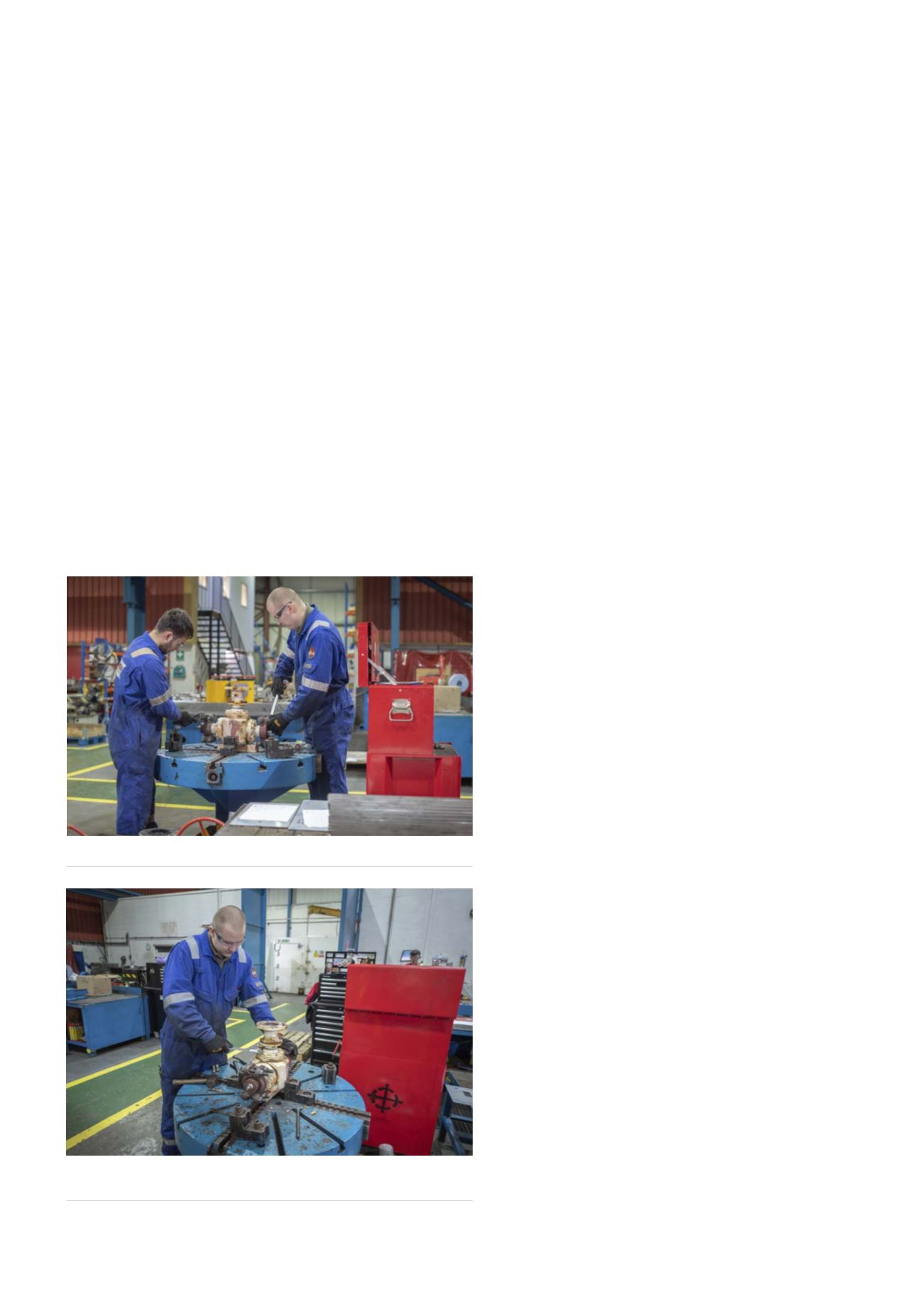
toll over time, ravaging internal components. All the while,
standards and regulatory requirements surrounding issues such
as fugitive emissions are becoming more stringent.
Change is inevitable
Change-related challenges facing established oil and gas operators
include:
)
New regulations.
)
Decreasing/increasing output – capacity and pressure changes.
)
Emerging technical issues (e.g. caused by degradation/erosion).
)
Changes in the line media chemical make-up (contaminants).
With so many factors at play, there inevitably comes a point
when valves are no longer fit for purpose. However, replacing
them with new products is often too costly and time consuming.
Strategic lifetime extension of existing valves via retrofit solutions
can therefore play an important role here. It enables operators to
meet shifting production demands and avoid unplanned downtime
in a cost-effective manner.
Intelligence-led retrofits
Far from being a stop-gap solution, when a retrofit is handled
well, it can enable an asset to perform better than ever. If control
valves are associated with frequent maintenance, high levels of
manual intervention and undiagnosed problems, it is likely that
they need attention; however, they do not necessarily need to be
replaced. An intelligent retrofit can turn the situation around faster
and more cost-effectively. In a retrofit scenario, valve engineers
have the benefit of insight into real production challenges that
may not have been apparent at the original point of specification.
Moreover, if the valves have been in service for a long time, modern
technologies and manufacturing techniques could offer new ways
to enhance their performance.
A best practice approach
So, what is the best way to go about this? The first step is to
conduct a detailed and purposeful technical review. Naturally,
that requires an inspection of the valves in question, but it is also
useful to consider high-profile valve failures associated with similar
production and performance issues. Drawing on extensive historic
information about original equipment manufacturer (OEM) valve
failures, and wider factors impacting the pipeline, enables engineers
to understand the context of the issues at hand.
Marrying this depth and breadth of technical insight with
advanced valve engineering capabilities can unlock new solutions
to solve enduring and emerging production problems. It results
in retrofit solutions that can improve valve performance and
stand the test of time, positively impacting overall operability and
profitability.
To summarise, a best practice approach to valve retrofits
involves nine critical steps:
)
Inspection and analysis of the valves in question.
)
Assessment of the wider operating environment and
system.
)
Cross referencing historic data on similar OEM valve
failures.
)
Problem solving rooted in the depth and breadth of
dedicated valve engineers’ expertise.
)
Development of highly-engineered solutions that are
precisely tailored to the operating demands and conditions of
valves.
)
Manufacture of new components and integration
with the valve.
)
All relevant testing.
)
Timely supply to the operator.
)
Underwriting and guarantee by an OEM to ensure the
manufactured retrofit reflects full OEM standards.
The following examples show how this works in real-world
scenarios, as handled by Severn.
Figure 1.
An initial valve inspection underpins problem solving.
Figure 2.
Specialist valve engineers can improve valve performance
with intelligent retrofits.
86
World Pipelines
/
MARCH 2020








